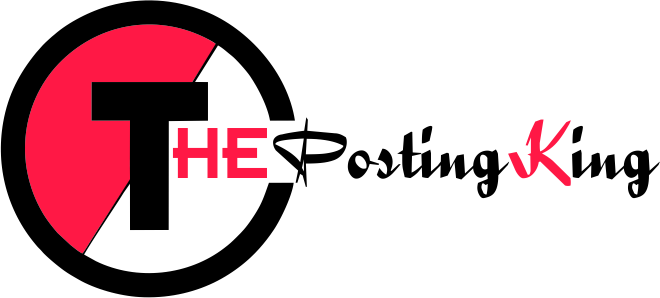It became imperative to operate with clear transparency and accountability after the global financial crisis in 2008 thus leading to the introduction of LEI. It is a 20-character alphanumeric code used as the identifier for the legal entities involved in financial transactions to significantly enhance the fight against money laundering and terrorist financing for the building of the enhanced compliant and globally stronger financial system. Let us understand how LEIs can benefit in strengthening regulatory compliance in detail.
Understanding the LEI: An International Identifier
The LEI is an initiative of the Financial Stability Board (FSB) and is regulated by the Global Legal Entity Identifier Foundation (GLEIF). This system aims to:
- Improve the accuracy and reliability of financial data: LEIs reduce confusion and possible mistakes caused by manual data entry or the use of different and interchangeable naming systems as they provide a single and global identifier.
- Enhance transparency in financial markets: The LEI also makes it easier for the regulators, financial institutions, and other market participants, to identify and monitor the parties to transactions, as effecting more accountability and transparency.
- Simplify compliance with regulatory requirements: LEIs enhance the efficiency of reporting, enabling many entities to be in line with several requirements these include the trade in derivatives, securities, and beneficial ownership disclosures.
Here are detailed points on the role of LEIs in boosting regulatory compliance:
1. Enhancing Transparency and Accountability:
- Clear Identification: LEIs offer a centralized distinct code for every legal entity that is involved in the financial transaction. This helps to reduce confusion and uncertainty that comes with name, address, or corporate structure duality by the entities.
- Auditing and Oversight: Financial institutions and regulators also get the ability to monitor all the activities of the entities via LEIs, audit, and check for non-compliance or other various types of risks as well.
- Beneficial Ownership: The use of LEIs can assist in linking an entity to its beneficial owner, and increase the effectiveness of combating fraud, including money laundering and tax evasion.
- Public Disclosure: Some legal systems in the US demand that official LEI for US companies be declared to the public, thus ensuring increased responsibility in the markets in which these groups engage themselves.
2. Streamlining Reporting Processes:
- Standardized Data Format: LEIs help make reporting data consistent by offering a common format for naming companies and other organizations. This helps to avoid the situation when many entities have to adjust their data depending on the specific requirements of regulations.
- Simplified Data Gathering: Global legal entity identifiers can be easily obtained through the GLEIF database which makes it easier for the regulators to get information about the entities and minimizes the need for entities to supply voluminous information for every reporting obligation.
- Automated Data Validation: Their data validation may run automatically through AI which saves a lot of time for the users in the validation of data.
3. Improving Risk Management:
- Counterparty Identification: By using LEIs, financial institutions can see who they are dealing with in the event of counterparty relationships; this in turn helps when determining counterparty risk.
- Systemic Risk Management: By get you LEI number, the regulators can monitor interconnectivity within the financial sectors to eventually check on potential chain effects that would compromise the stability of the financial system.
- Fraud Detection: Since LEIs offer a precise and standardized method of entitling entities, they can help in fraud identification and prevention because it becomes harder for individuals involved in fraudulent activities to hide their identities.
4. Facilitating Cross-Border Compliance:
- Global Standardization: The global nature of the LEI system is beneficial in the sense that different entities around the world can be easily identified and reported in a consistent method and are especially helpful for global businesses.
- Harmonization of Regulations: Ongoing initiatives to standardize LEI requirements across various regulatory businesses decrease the regulatory compliance costs for global organizations.
5. Promoting Market Integrity:
- Reduced Information Asymmetry: It aids in minimizing information asymmetry between the parties, hence enabling decision-makers to make informed decisions thus avoiding the possibility of manipulating the markets.
- Increased Investor Confidence: LEIs increase efficiency, reduce risk, and bring certain improvements to financial markets, which is beneficial for investors.
6. Enhancing Financial Stability:
- Early Warning Systems: LEIs can help build early warning systems for fiscal instability that enable regulators to accurately predict risks and act before problems occur.
- Crisis Management: Due to tracing capability, the LEIs can assist the regulators in first determining which of the entities are involved in the financial crises for efficient management of the crises.
The LEI is an important instrument in enhancing the compliance of regulations and enhancing the stability of the global financial system. Due to it, the quality and timeliness of the information generated in the field of economy has improved, various recordation procedures have been eased, and the management of risks has been made easier.
The Importance of LEIs in Compliance Requirements
There are more and more regulations that require the usage of LEIs as the key identifier of legal entities. Some key regulations include:
- The Dodd-Frank Wall Street Reform and Consumer Protection Act (US): This historical legislation still mandates the use of official LEI for US companies for reporting derivatives transactions to swap data repositories. [US: https://www.lei.net/en-us/]
- The European Market Infrastructure Regulation (EMIR): EMIR requires LEIs to be included in reports of OTC derivative transactions with trade repositories.
- Markets in Financial Instruments Directive II (MiFID II): The MiFID II also mandates that investment firms use LEIs while reporting transactions to appropriate authorities.
Such regulations, among others, have contributed to the use of LEIs, hence, growing the number of users that are registered under the GLEIF.
Conclusion
Legal Entity Identifiers (LEIs) comprise one of the most essential elements in enhancing the entire compliance in the worldwide financial markets. Thus, LEIs increase transparency, promote higher quality, optimize the reporting process for regulators, decrease systemic risk if offered as a standard, and possess a clear identification function. They enable the flow of goods and services across borders, encourage companies’ disclosures, and development of technology in the financial industry.
For organizations who wish to improve their standing with regulatory authorities and participate in international trade and Wall Street, acquiring LEI should be considered compulsory. Visit www.lei.net to get you LEI number and make sure that your counterparty is verified and reputable on the financial web. The adoption of LEIs makes it possible for the entities involved to improve the financial market for transparency, efficiency, and resilience.



